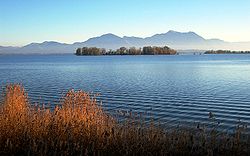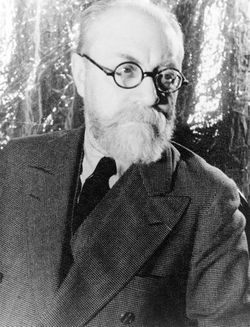Roy Lichtenstein - born 1923,
Bull III, from Bull Profile series.
1973 lithograph, screenprint and linecut 59.6x85.6cm,
Australian National Gallery
Pocztówka przedstawia byka z serii "Byki" namalowanego przez Roya Lichtensteina.
The postcard shows a bull in a series, "Bulls" painted by Roy Lichtenstein.
Tutaj można obejrzeć całą serię :
Here you can watch a whole series of bulls:
 |
| Roy Lichtenstein, 1985 |
Roy Lichtenstein - (ur. 27 października 1923 w Nowym Jorku, zm. 29 września 1997 w Nowym Jorku) - amerykański malarz, grafik, rzeźbiarz. Roy Lichtenstein w latach 30. chodził do nowojorskich klubów jazzowych i szkicował portrety muzyków. Był zafascynowany Charlie Parkerem, Johnem Coltrane'em, Milesem Davisem i sam próbował grać na saksofonie. Malarstwo studiował w latach 40. na Ohio State University. Pierwszą wystawę indywidualną miał w 1951 r. w Nowym Jorku. Początkowo malował w stylu abstrakcyjnego ekspresjonizmu, który triumfował wówczas w amerykańskiej sztuce.
Popartowski przełom nastąpił na początku lat 60. Wtedy zaczął malować popularne postaci z kreskówek Disneya. Pierwszy jego popartowski obraz Look Mickey powstał w 1961 r.
Wkrótce jego inspiracją stały się komiksy, reklamy i motywy z malarstwa innych artystów. Pierwsze komiksowe obrazy zaczął wystawiać w nowojorskiej Castelli Gallery, która promowała twórców popartu. W 1965 r. reprezentował USA na Biennale w Wenecji. W drugiej połowie lat 60. zaczął tworzyć obrazy cyklu Brushstrokes parodiujące ekspresyjny abstrakcjonizm. W latach 70. i 80. malował abstrakcyjne cykle Mirrrors. W 1979 r. został członkiem American Academy and Institute of Arts and Letters.
W 1994 r. zaprojektował gigantyczne murale dla nowojorskiej stacji metra Times Square przy 42 Ulicy (zainstalowane w 2002 r.).
Roy Lichtenstein zmarł w 1997 r. w Nowym Jorku. Retrospektywne wystawy miał jeszcze za życia w nowojorskich Muzeum Guggenheima i Museum of Modern Art.
Roy Lichtenstein (October 27, 1923 – September 29, 1997) was a prominent American pop artist. During the 1960s his paintings were exhibited at the Leo Castelli Gallery in New York City and along with Andy Warhol, Jasper Johns, James Rosenquist and others he became a leading figure in the new art movement. His work defined the basic premise of pop art better than any other through parody. Favoring the old-fashioned comic strip as subject matter, Lichtenstein produced hard-edged, precise compositions that documented while it parodied often in a tongue in cheek humorous manner. His work was heavily influenced by both popular advertising and the comic book style. He himself described pop art as, "not 'American' painting but actually industrial painting".
Distance: 10,926 km (6,789 miles)
Travel time: 10 days





























.jpg/200px-Frida_Kahlo_(self_portrait).jpg)


















